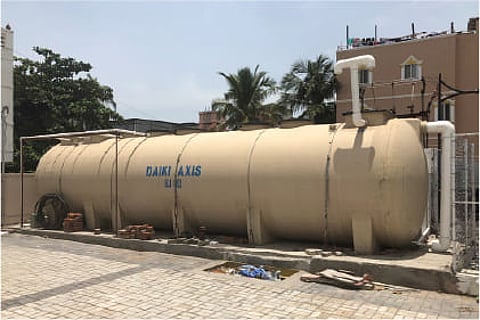Daiki Axis to Provide Cutting-Edge Johkasou Technology to Namami Gange Project in Uttarakhand
Daiki Axis, a provider of decentralized wastewater treatment solutions, is set to contribute its state-of-the-art Johkasou technology to the Namami Gange project, a flagship initiative of the Government of India aimed at rejuvenating the holy River Ganga. Johkasou, a unique and highly efficient wastewater treatment system developed by Daiki Axis, is designed to meet the highest standards of water quality while minimizing environmental impact. In a significant development, the Ministry of the Environment, Japan, has signed a Memorandum of Cooperation (MoC) with the National Mission for Clean Ganga (NMCG) to implement innovative technologies for effective wastewater treatment and management as part of the Namami Gange Project.
The Namami Gange program has recently achieved global recognition as one of the best water restoration projects. During a prestigious event organized by the United Nations (UN), the program received a distinguished award for its remarkable efforts in restoring the holy River Ganga to its pristine state.
Shri G Asok Kumar, Director General of the National Mission for Clean Ganga (NMCG), Ministry of Jal Shakti, Government of India, said, “Ganga has a special place in the Indian context as it is a holy and pristine river and caters to 43% of the population and forms around 23% of the geographical area in view of the deteriorating health of River Ganga and its ecosystem due to urbanization on its banks with a mandate and vision for restoring Nirmalta and Aviralta of River Ganga. Furthermore, the aim is to not just restore Ganga to its pristine glory, but also help the local population connect with its traditional wisdom. By harnessing the latest advancements in the field, we are forging a path towards sustainable development, one that aligns with our shared vision of a cleaner and greener future.”
Scheduled for commissioning in 2023-24, a total of nine projects are being undertaken currently, at four different locations covering both Kumaon and Garhwal regions primely to treat untreated domestic wastewater currently being discharged in the rivers. The treated water will meet CPCB standards and the latest NGT guidelines for the discharge of sewage-treated water to rivers. Each project will serve as a testament to the versatility and effectiveness of Daiki Axis' Johkasou technology in addressing diverse wastewater treatment needs. All of the products are manufactured locally under MAKE IN INDIA. Daiki Axis India will play a pivotal role as the technology provider, supplying and implementing the advanced Johkasou STPs. These projects will demonstrate the state-of-the-art Johkasou technology and the concept of decentralized treatment of wastewater which is the need of the hour in India especially in smaller cities and towns.
The Uttarakhand Peyjal Nigam, as the main owner of the project from the side of the Uttarakhand Government, will oversee the implementation and operation of these projects, IIT Roorkee will be evaluating the compliance of design to Indian standards and best engineering practices currently being followed in such projects, highlighting the collaborative efforts between Daiki Axis India and the local government body to achieve the common goal of cleaner and healthier water resources.
Mr. Kamal Tiwari, CEO of Daiki Axis India Private Limited said, “By highlighting the paradigm shift from traditional centralized Sewage Treatment Plants (STPs) to decentralized wastewater management systems, we embrace a forward-thinking approach. With a focus on decentralized systems, we unlock numerous advantages, including lower costs, simplified implementation, and reduced complexities surrounding land space and disputes.” He further added, “It is essential to recognize that decentralized wastewater management offers a progressive and sustainable approach to water treatment. By treating water efficiently and responsibly at its source, we pave the way for a brighter and more resilient future.”
Johkasou Technology will emerge as the key solution for wastewater treatment in hilly areas, where sewer networks are unavailable. Johkasou Technology provides the opportunity to replace outdated conventional systems such as septic tanks and soak pits etc. which were identified as one of the key reasons behind the Joshimath Disaster and the source of contamination of downstream drinking water sources. This transition to Johkasou Technology signifies a significant improvement in wastewater treatment efficiency and environmental impact.

